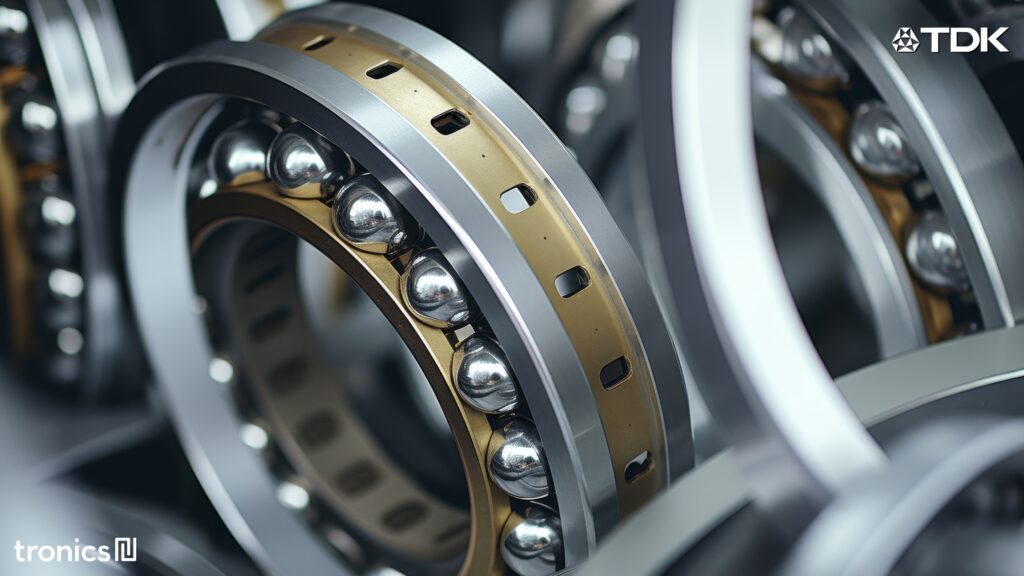VIEW ONLINE: > Article source
According to our research, the MEMS market for medical applications is currently approximately $2.1 billion, and is projected to grow at double digit rates for the next decade. Since MEMS based motion sensors for consumer applications are rapidly getting commoditized, medical MEMS may represent the most lucrative emerging opportunity for MEMS device designers and manufacturers. Tronics, a MEMS foundry services provider, is already manufacturing MEMS devices for several key players in the medical industry. The company says that it has made this market segment a priority and wants to grow its medical business to more than $20 million annually within three to five years. We recently spoke with Herve Borrel, Tronics’ President of North America.
MEMS Journal: How do you define medical or bio MEMS?
Herve Borrel: Although there is no universal definition, we can define medical or bio MEMS, as any devices that sense or provide a stimulus to a living organism, either externally or internally, or are involved in molecular or drug analysis. Well known examples would include implantable pressure sensors, neurostimulation devices, microarrays for DNA analysis, point-of-care diagnostics chips, micro needles, CMUTs, microfluidic chips, and many others.
MEMS Journal: The medical MEMS market is growing fast. What are the economic factors that are driving this growth?
HB: From the big picture perspective, there is currently lots of pressure to reduce healthcare costs. One of the ways to do this is to reduce the cost of medical testing and make it more available to patients. Thus, point-of-care testing is growing because it tends to be faster and cheaper. Another big driver is the aging population worldwide. So, there is more need for continual monitoring of chronic and “old-age” diseases. Overall, the diagnostics market is growing, enabled by the increasingly larger supply of available miniaturized technologies.
In general, the goal of many of the medical MEMS devices is to reduce costs while improving the speed of diagnoses. Also, miniaturized microsystem technologies enable continual monitoring of the efficacy of various therapies; this potentially reduces wasted time and money by more quickly treating a disease that may otherwise progress to a more expensive chronic condition and hospital stays.
Aside from cost savings, there is growing awareness of the potential of bio MEMS and their application to a wide variety of potential markets in the medical field. In the past, these MEMS enabled technologies simply did not exist.
MEMS Journal: How do the MEMS and microsystems technologies enable this demand?
HB: There are several factors fueling this growth, besides the evolution of the demand itself. Some key contributing factors are the more mature and capable MEMS manufacturing processes, a greater variety of metals, materials and substrates, and flexible mid-size MEMS foundries that are ready to develop the specialty process flows and integrations needed produce products for these markets.
MEMS Journal: Which specific applications do you see growing the fastest right now?
HB: Point-of-care diagnostics and personal health management with embedded sensors linked to mobile devices. Also, microarray technologies for DNA and proteomics applications are continuing to grow. Additionally, we are seeing more devices and applications with pressure sensors for acute and chronic intra-ocular, intra-cranial, and congestive heart failure monitoring. Remote monitoring, enabled by micro sensors, is also an area of growth; here, the idea is to minimize the number of trips to the doctor or to the hospital, and to detect existing or potential health problems earlier.
MEMS Journal: What types of special processes and materials are required for medical MEMS applications?
HB: The relative lack of standard process flows in MEMS remains a constraint, but the number of mature process blocks or even individual specialty processes is growing fast and makes it easier to achieve more ambitious dimensions and functionalities. An example in bio MEMS is the variety of diagnostics, DNA analysis, or POC chips that can now be made in volume manufacturing. Some of the key processes required are: biocompatible materials (metals and polymers), nano-imprint lithography, micro-molding, through-wafer DRIE, and screen printing, among others.
Substrates and materials are key in reaching the right surface bindings and the right device dimensions. Micro-assay conditioning, for example, is one of the areas where a lot of progress is being made with the innovative MEMS techniques. This demand is pushing the boundaries of classical MEMS materials. Parylene, PVA, LCP, PDMS and ceramics are starting to appear in foundries that deal with medical MEMS devices.
MEMS Journal: What types of business challenges are you seeing with medical MEMS?
HB: The primary challenge with anything implantable is the length of time from concept to production. There is a long time to revenue for all companies involved in the medical device industry. In some cases, these devices may use different materials or integrations that are not considered “predicate use” by the FDA, and therefore require extensive clinical studies and years of development and tens or hundreds of millions of dollars of investment to get a product to market. Producing MEMS sensors is a specialty development and manufacturing operation, and for a company to commit the type of time and expense on a project that may never make it to market represents a real challenge to continue to get more MEMS devices into high volume production. Fortunately, many medical MEMS projects are simpler and faster to get to market.
MEMS Journal: What types of technical challenges are you seeing with medical MEMS?
HB: The primary technical challenges are usually related to trying to develop device integrations that stay within a materials set that is accepted and known from a regulatory standpoint. By developing process blocks for microfluidics or implantable devices that consist of these accepted materials sets, it can help to reduce the time and expense in trying to get a device through the regulatory process and into the market.
Also, while the variety of materials and processes is a usual challenge with MEMS fabrication, it seems to be especially so with medical applications. Almost every project is unique with a custom process. On the other hand, this is really an opportunity for MEMS foundries that are flexible enough.
MEMS Journal: From a geographic perspective, what are the top 3-4 spots worldwide with the most medical MEMS device development activity?
HB: Europe is where we see the most activity right now. We have several European customers for whom we are fabricating devices for diagnostics, R&D instruments, and implantable applications. We also do have some activity in the US, but most of these are still in early stage development.
Overall, North America and Western Europe seem to be the main drivers. From what we are seeing, Europe is generally leading right now, probably because it is usually easier or faster (or both) to introduce a new medical product in Europe. We are even seeing some US startups that are planning to introduce their products in Europe first. Israel must also be mentioned here, as it has several interesting medical MEMS startups.
MEMS Journal: Is Tronics developing its own product and device IP in the medical MEMS application segment? Or do you plan to continue to only provide independent foundry services?
HB: We currently have no plans and are not actively developing our own products for the medical MEMS market. Our model in this space continues to be that of a foundry operation. We continually develop process IP that may or may not be specifically applicable to medical MEMS, but nothing around product design.
MEMS Journal: Large semiconductor foundries such as TSMC have been much more active in the MEMS technology sector recently. This has resulted in their taking away business from mid-size MEMS foundries. Do you believe that companies such as TSMC will be a threat to take the most lucrative medical MEMS projects from the smaller foundry players?
HB: Of course this is always possible. However, the materials and processing techniques needed for MEMS devices would be very difficult to run in a high volume semiconductor foundry, unless they dramatically changed the way they operate. Most of these devices include non-standard substrates, such as ceramics or glass, precious metals, and polymer layers that are not normally found in high volume foundries. Additionally, the volume requirements for most of these devices would be in the hundreds of wafers per year which would fall far outside of the traditional high volume foundry requirements for taking on projects.
Generally speaking, we expect that the larger foundries will be more likely to take a significant portion of the higher volume, lower complexity opportunities. These larger foundries are typically less flexible with process development and materials variety, so the majority of the current medical MEMS and sensors opportunities are not in their “sweet spot”. They will, however, be very competitive when a product is more mature and the volumes are above several tens of thousands of wafers per year.
MEMS Journal: Specifically with your business, what are you seeing in terms of trends with medical MEMS and related projects?
HB: Tronics is witnessing a sharp increase in bio and medical MEMS inquiries and projects. Actually, more than fifty percent of our new leads in the past year have been for medical applications. From what we are seeing, those opportunities are not typically well served by the larger, traditional high volume semiconductor and MEMS foundries that tend to focus on more standardized process flows.
MEMS Journal: Can you share some details about one of your projects that has been commercialized successfully and is now in high-volume production? What was the device and what is the current number of units produced?
HB: All our customers are quite sensitive in terms of disclosure, so we cannot cite their names. We have several products that we have been manufacturing for several years. They have not yet reached high volumes, but are already in production mode and the end products are being sold commercially. Some of them are in the diagnostics and DNA analysis markets. We are looking forward to the volumes growing from thousands or tens of thousands, to millions.
MEMS Journal: What are some of the typical MEMS projects that you have seen?
HB: Based on our experience, there are no “typical” medical MEMS projects. Some require a fifteen mask integration and require only a few tens of wafers a year, while others may have just a few manufacturing steps, but require volumes that are well above ten thousand wafers per year. However, there is some commonality in terms of processes, materials, the need for flexible engineering, and extensive quality management.
MEMS Journal: What are 3-4 interesting medical MEMS startups right now? Why?
HB: There are obviously quite a few very interesting startups with innovative products that have the potential to become leaders in their field. I can think of two that are particularly promising, Endotronix, involved in wireless cardiac monitoring, and Aleva Neurotherapeutics involved in neurostimulation therapy.
MEMS Journal: Why is Tronics so interested in medical and bio MEMS?
HB: This is a real opportunity for mid-size foundries such as Tronics, and that is why Tronics has made medical MEMS manufacturing one of its focus areas for growth. We are investing in equipment, technologies and people to meet the growing demand. We plan to reach annual revenues of more than $20 million in this market within the next 5 years.
We believe that the typical “medical MEMS” customer requirements are a good match to our strengths because of our ability to execute complex and special process development projects. We also operate production fabs that are compatible with smaller volumes and exotic materials.
*********************************************
This article is a part of MEMS Journal’s ongoing market research project in the area of medical MEMS and sensors. If you would like to receive our comprehensive market research report on this topic, please contact Dr. Mike Pinelis at mike@memsjournal.com for more information about rates and report contents.
Copyright 2014 MEMS Journal, Inc.





